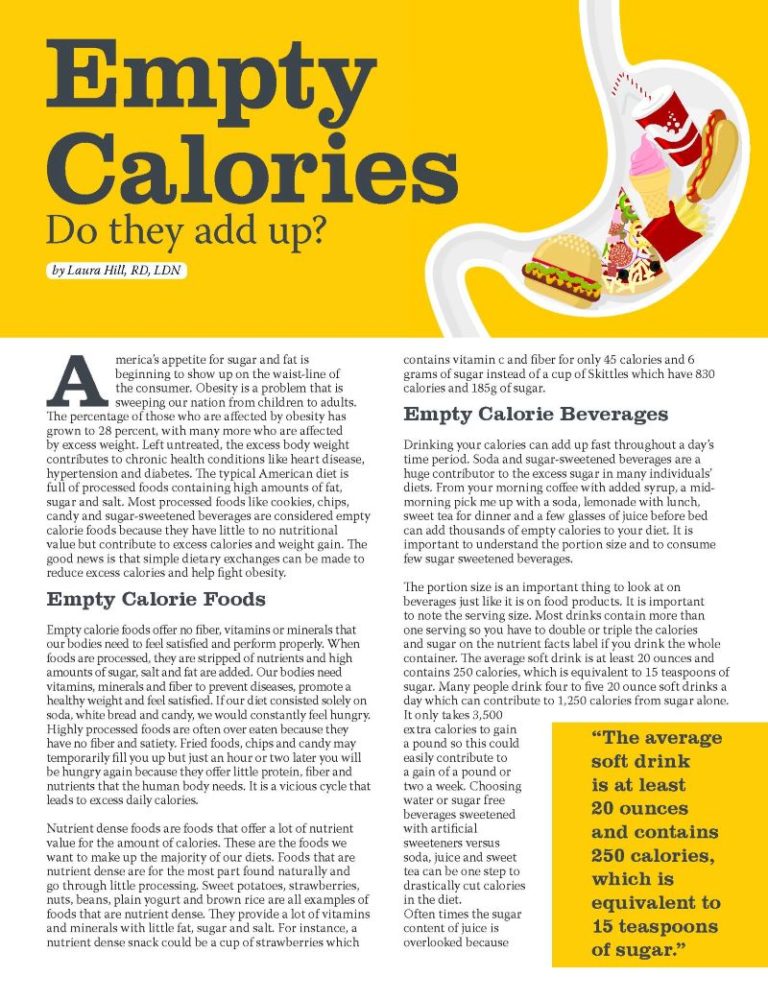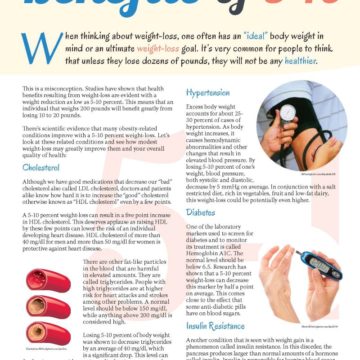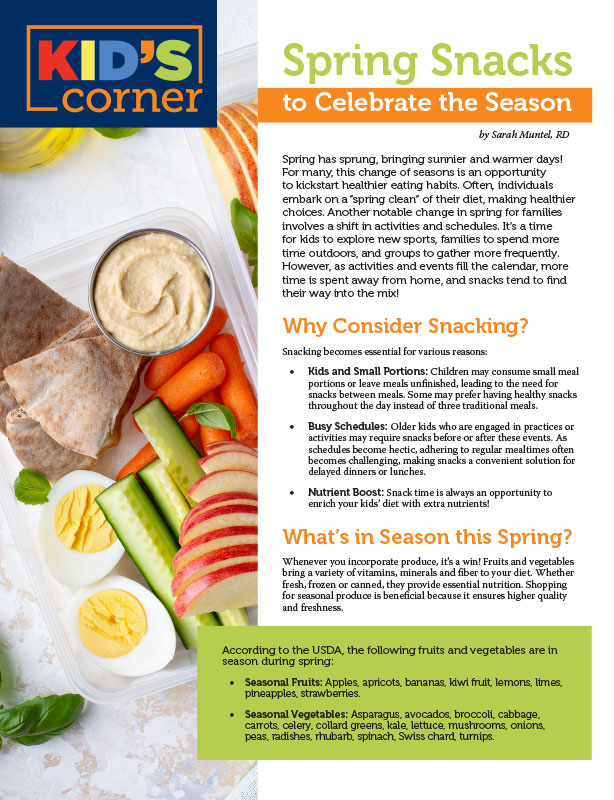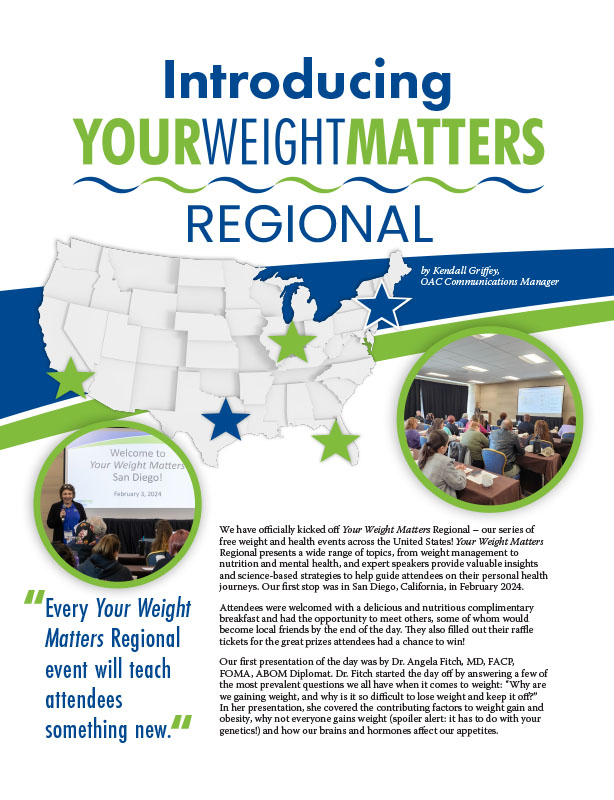Empty Calories: Do they add up?


by Laura Hill, RD, LDN
Fall 2013
America’s appetite for sugar and fat is beginning to show up on the waist-line of the consumer. Obesity is a problem that is sweeping our nation from children to adults. The percentage of those who are affected by obesity has grown to 28 percent, with many more who are affected by excess weight. Left untreated, the excess body weight contributes to chronic health conditions like heart disease, hypertension and diabetes. The typical American diet is full of processed foods containing high amounts of fat, sugar and salt. Most processed foods like cookies, chips, candy and sugar-sweetened beverages are considered empty calorie foods because they have little to no nutritional value but contribute to excess calories and weight gain. The good news is that simple dietary exchanges can be made to reduce excess calories and help fight obesity.
Empty Calorie Foods
Empty calorie foods offer no fiber, vitamins or minerals that our bodies need to feel satisfied and perform properly. When foods are processed, they are stripped of nutrients and high amounts of sugar, salt and fat are added. Our bodies need vitamins, minerals and fiber to prevent diseases, promote a healthy weight and feel satisfied. If our diet consisted solely on soda, white bread and candy, we would constantly feel hungry. Highly processed foods are often overeaten because they have no fiber and satiety. Fried foods, chips and candy may temporarily fill you up but just an hour or two later you will be hungry again because they offer little protein, fiber and nutrients that the human body needs. It is a vicious cycle that leads to excess daily calories.
Nutrient dense foods are foods that offer a lot of nutrient value for the amount of calories. These are the foods we want to make up the majority of our diets. Foods that are nutrient dense are for the most part found naturally and go through little processing. Sweet potatoes, strawberries, nuts, beans, plain yogurt and brown rice are all examples of foods that are nutrient dense. They provide a lot of vitamins and minerals with little fat, sugar and salt. For instance, a nutrient dense snack could be a cup of strawberries which contains vitamin c and fiber for only 45 calories and 6 grams of sugar instead of a cup of Skittles which have 830 calories and 185g of sugar.
Empty Calorie Beverages
Drinking your calories can add up fast throughout a day’s time period. Soda and sugar-sweetened beverages are a huge contributor to the excess sugar in many individuals’ diets. From your morning coffee with added syrup, a mid-morning pick me up with a soda, lemonade with lunch, sweet tea for dinner and a few glasses of juice before bed can add thousands of empty calories to your diet. It is important to understand the portion size and to consume few sugar-sweetened beverages.
The portion size is an important thing to look at on beverages just like it is on food products. It is important to note the serving size. Most drinks contain more than one serving so you have to double or triple the calories and sugar on the nutrient facts label if you drink the whole container. The average soft drink is at least 20 ounces and contains 250 calories, which is equivalent to 15 teaspoons of sugar. Many people drink four to five 20 ounce soft drinks a day which can contribute to 1,250 calories from sugar alone. It only takes 3,500 extra calories to gain a pound so this could easily contribute to a gain of a pound or two a week. Choosing water or sugar free beverages sweetened with artificial sweeteners versus soda, juice and sweet tea can be one step to drastically cut calories in the diet.
Often times the sugar content of juice is overlooked because it is good for you, although an 8 ounce glass of juice can contain 8 teaspoons worth of sugar and around 130 calories. The consumption of multiple glasses of juice can easily contribute to excess calories. Juice does not contain fiber like the whole fruit. Eating the whole fruit will help with portion control, you are less likely to eat three apples where you might easily consume three servings of juice in one sitting. Therefore, choose whole fruit like an apple versus apple juice. The fiber will increase satiety making it less likely to over consume and the whole fruit provides more vitamins and minerals than the juice.
Choose Healthier Foods and Preparation
Grain products made with white flour often contribute to empty calories in the diet. Pastries, donuts and sugar sweetened cereals for breakfast can start the day with a sugar rush that will leave you hungry a few hours later due to a crash in blood sugar. Choosing whole grain cereals with 6 grams of sugar or less per serving, whole grain waffles with at least three grams of fiber per serving or omelets made with eggs and veggies will help the body feel full longer and overall consume fewer calories because these foods are more nutrient dense. Whole grain bread at lunch will give you more fiber, protein, vitamins and minerals as opposed to white bread. Choosing whole wheat grain pasta at dinner versus white pasta can also contribute more vitamins and minerals than the white counterpart.
The way food is prepared is another way to add empty calories. Whether you are ordering a meal out or whipping up dinner at home it is important to choose foods that are grilled, baked, steamed or raw foods like vegetables and fruit. Frying food in butter or adding breading and deep frying foods adds no nutritional value and adds an enormous amount of excess calories. For example, if you are eating out, choosing a grilled chicken breast, salad and baked potato saves a lot of calories and fat opposed to fried chicken tenders, fries, and macaroni and cheese.
Conclusion
Excess calories from processed foods, sugar-sweetened beverages and fried foods add up quickly. To avoid excess calories, it is important to remember to read labels, watch portion sizes and to consume calorie free beverages. Making simple switches like replacing sugar-sweetened beverages with water, choosing grilled meats instead of fried and choosing whole fruit instead of fruit juices creates a calorie reduction that can lead to weight-loss.
About the Author:
Laura Hill, RD, LDN, is a registered dietitian in Columbia, Tennessee employed by the Tennessee Department of Health, and the Maury Regional Medical foundation as a nutrition consultant for the Maury County School System.
by Sarah Muntel, RD Spring 2024 Spring has sprung, bringing sunnier and warmer days! For many, this…
Read Articleby Kendall Griffey, OAC Communications Manager Spring 2024 We have officially kicked off Your Weight Matters Regional…
Read Articleby Nina Crowley, PhD, RD (with Inspiration from Shawn Cochran) Winter 2024 Dating, no matter your age,…
Read Article









